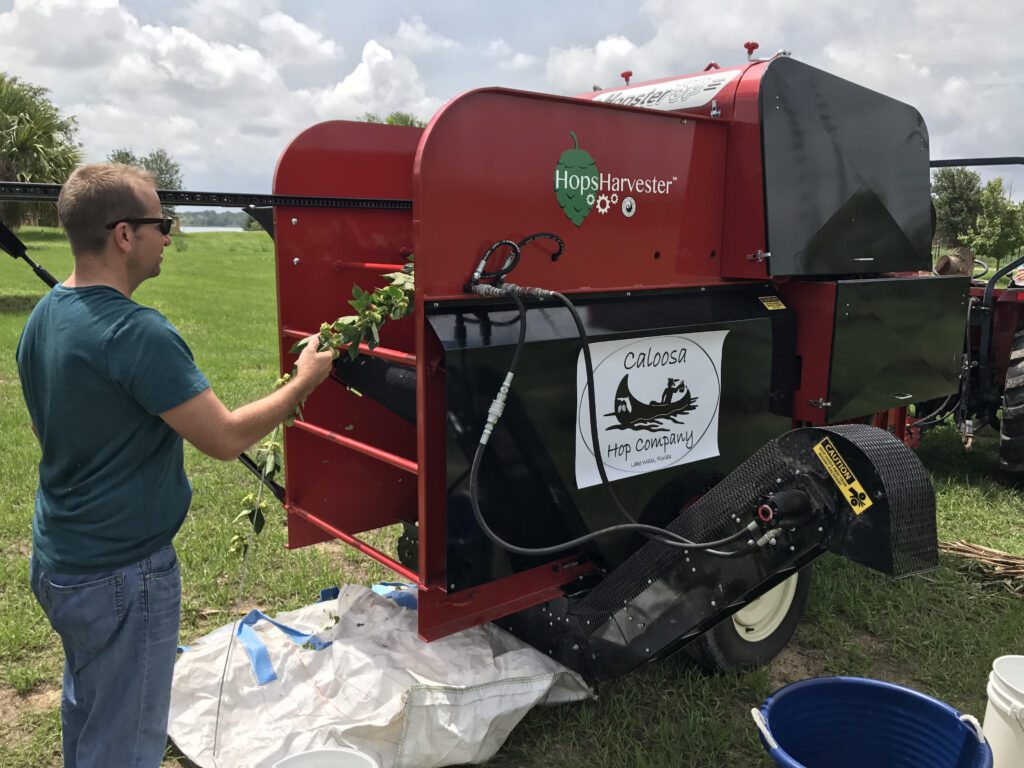THE FOUNDERS of Caloosa Hops in Lake Wales could harvest their novel crops manually, but the idea does not appeal to them much. It’s been enough of a challenge venturing into growing hops in the Sunshine State, says co-owner Brian Marston. He and longtime pal Kevin Updike, president of the Polk County Farm Bureau and a Lake Wales native, decided they needed some technology if they were going to check out the possibilities of growing hops in Florida.
The men joined forces with Tom Kirschner, a friend from the Fort Myers area, to try out hops growing this year. ey attended the 2016 Florida Hops Consortium, and became enthused about the idea. In Florida, where citrus crops have been plagued by disease and bad weather, researchers are looking for alternative crops for farmers. Scientists with the Institute of Food and Agricultural Sciences (UF/IFAS) are now working with a $158,000 grant from the Florida Department of Agriculture and Consumers Services to develop a viable hops crop. Hops, which have a long history of use in Chinese herbal medicine, are currently used to make beer. Researchers say they hope to learn how well hop varieties can grow in Florida, yield potential, resistance to downy mildew disease and insect problems.
Hops crops could help growers looking for alternative crops and contribute to the growing demands of the micro brewing industry. The industry has a $2 billion a-year impact on Florida’s economy, according to the Brewers Association’s website.
Most inquiries received by UF researchers are from Central Florida growers whose citrus crops are not growing well and who have tried other alternative crops, researchers say. Farmers also want to know whether they can make a profit from hops. Researchers are hopeful that can happen.
Craft beer produced and sold in Florida accounted for $875.9 million in 2013. Ten times more Florida craft beer has been produced in the past two years— from about 100,000 barrels a day to more than 1 million, according to researchers at UF. Craft breweries have nearly tripled in Florida in the last two years— from 66in 2013 to 182 in 2015.
The founders of Caloosa Hops decided to dive into the concept this year, and invested in a $20,000 harvesting machine to sift through the plants. When asked how long it might take to harvest the company’s plants without the machine, Marston chuckled, “I don’t know, and I don’t think we ever want to find out.”
Caloosa has two yields, about a half to three-quarter acres in size, plus another two acres. Hops grow on what are calls “bines”— coaxed about 17 to 20 feet skyward on a rope. The plants are cut down, then placed on the harvester. The machine rakes the plants over tooth-like mechanisms to reap the hops harvest.
The portable hops harvesters allow small farms such as Caloosa to pick, clean and harvest in yields, avoiding the extra labor of transporting crops to a harvesting facility. Harvester manufactures boast that the machines are up to 100 times faster than hand-picking operations.
Marston says the Caloosa owners are enjoying the adventure of learning about growing hops, and are hopeful it will turn into a successful business at some point. All three founders have some sort of farming background, and have “day jobs” in addition to the hops growing business.
by MARY TOOTHMAN

